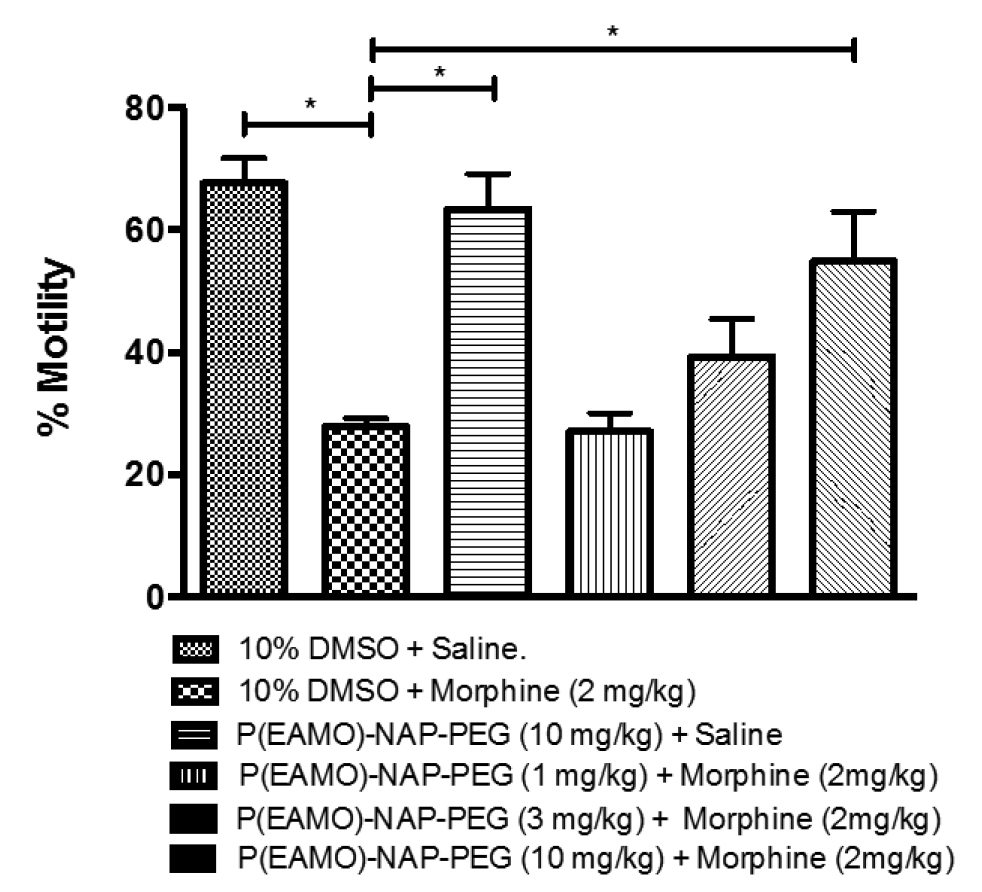Biomedical
Treatment of Opioid Induced Constipation
Opioids are the most commonly prescribed medication for the treatment of severe pain. However, opioid use can produced multiple adverse side-effects which include drug abuse, dependence, and constipation. These side-effects are mostly attributed to opioid binding at mu opioid receptors in the central nervous system.
The technology
Researchers at Virginia Commonwealth University have developed a nanoparticle-based opioid conjugate that has increased bioavailability and carrying capacity of a peripheral nervous system selective opioid antagonist. This conjugate has excellent oral availability and half-life with the potential to treat opioid induced constipation. Nanoparticle-based delivery systems provide additional stability to the opioid ligand, and produces very low therapeutic side effects.

Figure 1. P(EAMO)-NAP-PEG effects on intestinal motility in acute morphine treated mice through oral administration.
